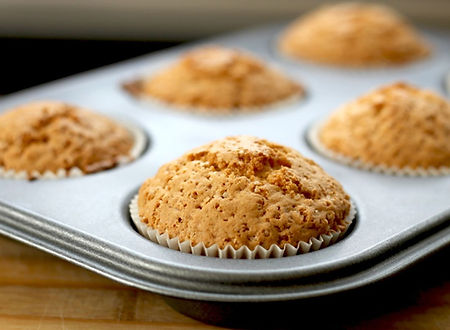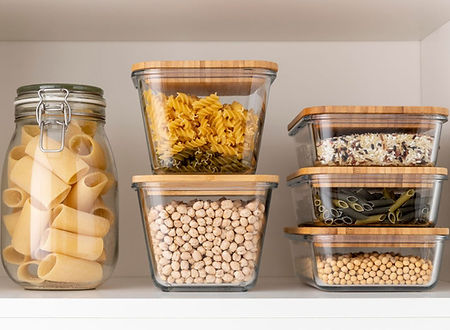
Non-Toxic Kitchen Guide: Cook, Prep & Store Food Without Harmful Chemicals
Your kitchen is where meals — and memories — are made. But many common tools and appliances can release harmful chemicals into your food and home. From non-stick coatings that flake into meals to plastics that leach BPA, small daily exposures can add up over time.
Write your title here. Click to edit.
This guide is your hub for building a safe, durable, and truly non-toxic kitchen — without overwhelm. Whether you’re upgrading cookware, replacing utensils, or choosing healthier storage options, we’ll walk you through what matters and link you to Zenda’s in-depth reviews.
Better choices begin with better information.
And here, every pick is vetted against our values — never driven by hype.
What Does “Non-Toxic” Mean in the Kitchen?
In the kitchen, “non-toxic” means avoiding materials and finishes that can leach harmful substances into your food or indoor air.
Common chemicals to avoid:
-
PTFE (Teflon) and other forever chemicals (PFAS)
-
PFOA (previously used in non-stick cookware)
-
BPA & BPS (in plastics)
-
Lead & cadmium (in glazes and coatings)
-
Formaldehyde (in adhesives)
Instead, look for materials like stainless steel, cast iron, enameled cast iron, glass, and platinum-grade silicone.
Non-Toxic Kitchen Essentials

1. Non-Toxic Cookware & Bakeware
Best materials:
-
Stainless steel (18/8 or 18/10) — durable, non-reactive
-
Enameled cast iron — retains heat, adds color, safe glaze
-
Carbon steel — naturally seasoned, chemical-free
-
100% ceramic — no metal core, lead-free glazes
-
Glass — inert, oven-safe
2. Safer Kitchen Utensils
Best choices:
-
Bamboo & wood — renewable, gentle on cookware
-
Stainless steel — long-lasting, dishwasher-safe
-
Platinum-grade silicone — heat-resistant, BPA-free
-
Glass — inert, oven-safe
Read:
Best Non-Toxic Kitchen Utensils


3. Cutting Boards Without Toxins
Best materials:
-
Maple, walnut, or beech wood — naturally antimicrobial
-
Bamboo — sustainable, lightweight
-
Food-grade composite — if NSF-certified and formaldehyde-free
Read:
4. Food Storage & Meal Prep Containers
Best materials:
-
Glass with BPA-free lids
-
Stainless steel containers or bento boxes
-
Silicone bags (platinum-grade)
Read:
Best BPA-Free Food Storage Containers


5. Safest Small Appliances
Look for appliances labeled PTFE- and PFOA-free, with stainless steel or ceramic interiors.
Examples:
-
Air fryers with stainless steel baskets or ceramic coating
-
Blenders with glass jars or stainless steel blades
-
Kettles with stainless steel or glass interiors
-
Toasters with stainless steel interiors and minimal plastic contact
Read:
Best Non-Toxic Blenders
Are Air Fryers Safe?
Healthy & Non-Toxic Air Fryers Guide
6. Non-Toxic Outdoor Cooking Essentials
Best choices:
-
Stainless steel or ceramic-coated gas grills — cleaner burn, durable materials
-
Portable butane or propane stoves — stainless steel, compact, PFAS-free
-
Cast iron or stainless steel grill cookware — high-heat safe
-
Natural lump charcoal (no additives) — cleaner smoke
-
Heat-safe grilling tools — stainless steel or bamboo
-
Glass or stainless containers — for marinades & outdoor prep
Read:
Best Non-Toxic Gas Grills
Best Portable Gas Stoves
Healthiest Grill Types Explained

See how these essentials make thoughtful gifts in our Sustainable Non-Toxic Gift Guide →
FAQs
What is the safest cookware to use?
Stainless steel, cast iron, glass, and 100% ceramic are generally considered the safest cookware materials.
Are silicone kitchen utensils safe?
Yes — if they are platinum-grade and free from fillers.
What kitchen tools should I avoid?
Avoid tools with plastic components that contact hot food, and low-quality non-stick coatings.
Is stainless steel cookware 100% safe?
Yes for most people, though those with nickel sensitivity should opt for nickel-free grades.
How can I make my kitchen more eco-friendly?
Swap disposables for reusables, choose durable non-toxic items, and compost food waste.
At your own pace and efficiently
Building a non-toxic kitchen doesn’t mean replacing everything at once — start with your most-used items and upgrade over time.
Continue your journey with our Eco-Friendly Home Guide, Non-Toxic Materials Guide, and Best Non-Toxic Cleaning Products Blog.
Join our newsletter for safe kitchen picks, seasonal deals, and tips to make healthy, conscious living simpler.
